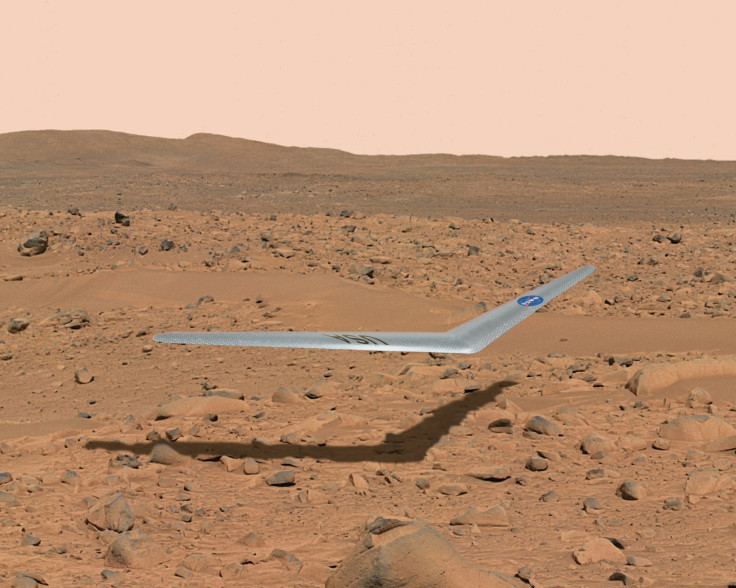NASA's Prandtl-m Could Become The First Aircraft To Fly On Mars

NASA announced Tuesday that it is building a prototype for a glider that would be deployed on Mars for the space agency’s future missions. The boomerang-like aircraft, which would be made of either fiberglass or carbon fiber, would be tested later this year when it would be released from a height of about 100,000 feet -- simulating the flight conditions of the Martian atmosphere.
Scientists hope that the proposed aircraft, named Preliminary Research Aerodynamic Design to Land on Mars (Prandtl-m) would not only be capable of flying in the Martian atmosphere, but would also possess the ability to glide down and land on the surface of the red planet.
“The Prandtl-m could overfly some of the proposed landing sites for a future astronaut mission and send back to Earth very detailed high resolution photographic map images that could tell scientists about the suitability of those landing sites,” NASA scientist and Prandtl-m Program Manager Al Bowers, said, in a statement released Tuesday.
Moreover, because the aircraft weighs less than a pound and would be modified to include foldable wings, it can easily be carried aboard NASA’s CubeSats, which are about the size of a briefcase.
“The actual aircraft's wingspan when it is deployed would measure 24 inches and weigh less than a pound. … With Mars gravity 38 percent of what it is on Earth, that actually allows us up to 2.6 pounds and the vehicle will still weigh only one pound on Mars,” Bowers said, in the statement.
If the initial tests are successful, the glider would be subjected to a series of tests where it would be dropped from a height of up to 450,000 feet.
“The aircraft would fall back into the Earth's atmosphere and as it approaches the 110,000-to-115,000-feet altitude range, the glider would deploy just as though it was over the surface of Mars,” Bowers said. “If the Prandtl-m completes a 450,000-foot drop, then I think the project stands a very good chance.”
Scientists hope that the aircraft would be sent to the red planet during missions planned for sometime between 2022 and 2024.
© Copyright IBTimes 2024. All rights reserved.






















